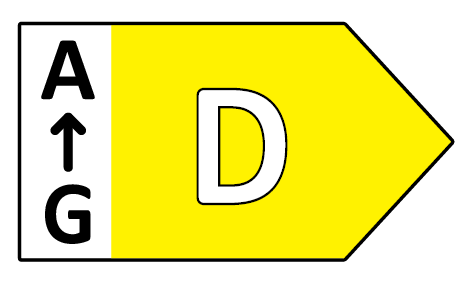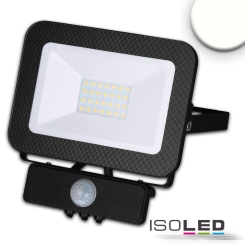
Outdoor lighting with motion detector
Outdoor lighting with motion detector provides a convenient and energy-efficient way to illuminate the outdoor area. The automatic on/off mechanism saves energy and increases safety around the house.







































Outdoor lighting with motion detector is an effective way to reduce energy consumption and at the same time provide more safety in the outdoor area. The motion detector detects movement in a specific area and automatically turns the light on to provide adequate illumination. As soon as no more movement is detected, the light turns off again.
Outdoor lighting with motion sensors is especially useful for pathways, entrances, garages and gardens, as it helps deter burglars and increases visibility in the dark. A combination of a dusk sensor and motion detector ensures that lights are only turned on when they are really needed.
When choosing outdoor lighting with a motion sensor, it is important to pay attention to the range and angle of detection to ensure that the motion sensor is working properly. It is also advisable to make sure that the device is weatherproof and durable to ensure reliable outdoor function.
In addition, modern outdoor lighting with motion detectors can be combined with smart home systems to allow individual control of lighting. In this way, you can control and adjust the lighting to your needs at any time and from any location via app.
What types of motion sensors are there?
There are two main types of motion sensors: passive infrared (PIR) sensors and microwave sensors. PIR sensors respond to heat emitted by moving objects, while microwave sensors respond to motion in the radar range.
Passive Infrared Sensors (PIR)
Passive infrared (PIR) sensors are a type of motion sensor used to monitor motion in a specific area. PIR sensors work by detecting the heat signatures emitted by moving objects in the sensing area. These sensors are widely used in the security and lighting industries and can be used to monitor homes, stores, offices, warehouses and outdoor areas. PIR sensors can also be used in combination with other security and lighting devices, such as alarm systems and motion detectors, to provide comprehensive monitoring and control. It is important to select the right PIR sensor for the intended application and install it properly to ensure reliable and effective monitoring.
Microwave Sensors
Microwave sensors for outdoor lighting are an advanced and reliable way to detect motion in the environment and respond accordingly. Unlike passive infrared (PIR) sensors, microwave sensors use electromagnetic waves to detect motion. The waves are emitted and reflect back when they encounter a surface. When a person or vehicle is within the area, the reflection of the signal is disrupted and the system triggers lighting.
Microwave sensors have the advantage of being able to detect motion at a greater distance than PIR sensors. They are also less prone to false alarms because they respond to motion as well as heat. Another strength of microwave sensors is that they work through walls and windows, making them suitable for use indoors and in places where sight lines are limited. However, microwave sensors also have some drawbacks. They tend to be more expensive than PIR sensors and require more power, making them less suitable for battery-powered lighting solutions. They can also be more difficult to set up properly and can sometimes be triggered incorrectly, for example by passing vehicles.
Microwave sensors offer a powerful and reliable way to detect motion and control outdoor lighting accordingly. They are particularly useful in areas where PIR sensors are not effective, such as indoors or in situations where sight lines are limited.
Range for motion sensors
Range in motion sensors refers to the distance at which motion can be detected. There are several factors that affect the range, such as the sensitivity of the sensor, the ambient temperature, and the size of the object being detected. Typically, motion sensors have a range of 5 to 15 meters. However, it is important to note that too long a range can also lead to unnecessary energy consumption, as the lights may stay on for unnecessarily long periods of time. Therefore, the range should be carefully selected depending on the application and location.
Detection angle for motion sensors
The detection angle of a motion sensor describes the range in which the sensor can detect motion. In most cases, this angle can be set between 90° and 270°. When motion is detected within the sensor's detection range, the connected lighting is activated. A large detection angle means that the sensor can cover a larger area, which is particularly advantageous when illuminating large areas or rooms. However, it should also be noted that too large a detection angle can result in the sensor detecting too many unwanted movements and thus being activated unnecessarily often, which shortens battery life and incurs unnecessary power costs.
App control for outdoor motion sensors
Most modern outdoor motion sensors can be controlled via an app installed on a smartphone or tablet. These apps allow the user to adjust the motion sensor's settings such as sensitivity, duration of illumination, and schedule. Some apps also provide real-time monitoring and alerts when motion is detected. App control of motion sensors is especially convenient for those who like to keep control of their lighting settings even when they are away from home.
 Deutsch
Deutsch
 English
English
 Nederlands
Nederlands
 Français
Français
 Contacts
Contacts
 +49(0)2822-9148740
+49(0)2822-9148740











 Andorra
Andorra
 Belgien
Belgien
 Bosnien und Herzegowina
Bosnien und Herzegowina
 Bulgarien
Bulgarien
 Dänemark
Dänemark
 Estland
Estland
 Finnland
Finnland
 Frankreich
Frankreich
 Griechenland
Griechenland
 Irland
Irland
 Island
Island
 Italien
Italien
 Kroatien
Kroatien
 Lettland
Lettland
 Liechtenstein
Liechtenstein
 Litauen
Litauen
 Luxemburg
Luxemburg
 Malta
Malta
 Monaco
Monaco
 Niederlande
Niederlande
 Norwegen
Norwegen
 Österreich
Österreich
 Polen
Polen
 Portugal
Portugal
 Rumänien
Rumänien
 San Marino
San Marino
 Schweden
Schweden
 Schweiz
Schweiz
 Serbien
Serbien
 Slowakei
Slowakei
 Slowenien
Slowenien
 Spanien
Spanien
 Tschechische Republik
Tschechische Republik
 Ungarn
Ungarn
 Vereinigtes Königreich
Vereinigtes Königreich
 Zypern
Zypern







.png)











.jpg)
.jpg)
.jpg)
.jpg)

.jpg)
.jpg)
.jpg)